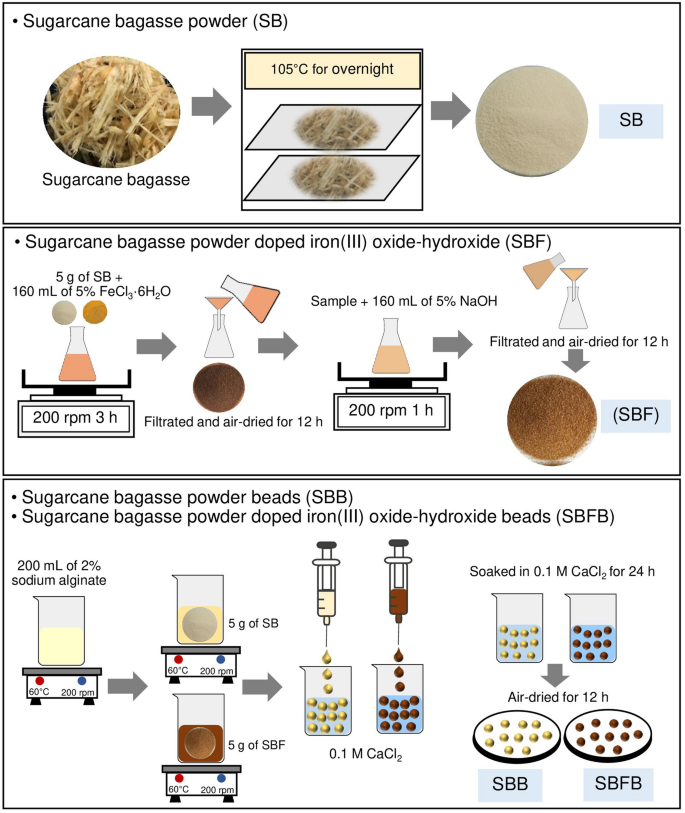Discover the Cutting-edge Benefits of Products From Sugarcane for Sustainable Living
Sugarcane has become an essential source in the quest for lasting living. Its varied applications extend biodegradable product packaging, renewable resource, and healthier food options. As sectors look for eco-friendly choices, sugarcane's convenience offers promising remedies. However, truth capacity of sugarcane extends beyond its current uses. Exploring its innovative benefits can expose new pathways toward an extra lasting future. What various other possibilities might this amazing plant hold?

The Surge of Sugarcane as a Sustainable Source
As global recognition of environmental concerns grows, sugarcane has actually become a popular lasting resource. This flexible plant provides an array of benefits that add to environmentally friendly techniques. Sugarcane is a sustainable resource, with the ability of prospering in varied climates while taking in co2, thus mitigating greenhouse gas exhausts. Its rapid growth cycle permits constant harvesting, resulting in a continual supply of raw material.Additionally, sugarcane farming typically calls for much less water compared to other plants, making it a reliable choice in water-scarce areas. The byproducts of sugarcane, such as bagasse and molasses, can be repurposed for various applications, minimizing waste and advertising round economy concepts. Developments in agricultural techniques have led to more sustainable farming techniques, even more improving sugarcane's environmental profile. As consumers significantly look for lasting choices, sugarcane sticks out as a viable option for those committed to decreasing their ecological impact.
Eco-friendly Product Packaging Solutions
Exactly how can naturally degradable packaging options transform the means consumers come close to sustainability? By utilizing sugarcane-based products, these cutting-edge options supply an engaging choice to standard plastics. Naturally degradable product packaging made from sugarcane decays normally, markedly lowering land fill waste and greenhouse gas emissions. As consumers become significantly knowledgeable about their environmental influence, the need for sustainable product packaging proceeds to rise.These sugarcane-derived products not only offer sensible objectives yet likewise align with eco-conscious customer values. They offer a substantial means for individuals and businesses to add to a circular economic situation, advertising resource effectiveness and lessening ecological footprints. In addition, as markets adopt biodegradable choices, they cultivate a culture of sustainability that reverberates with an expanding group seeking liable choices.In essence, eco-friendly packaging services from sugarcane represent a crucial advance in lasting methods, encouraging consumers to make eco-friendly decisions without compromising ease or quality.
Renewable Resource Generation From Sugarcane
A substantial portion of eco-friendly power generation can be stemmed from sugarcane, showcasing its adaptability past conventional farming uses. Sugarcane biomass, consisting of bagasse and leaves, is a potent source for bioenergy manufacturing. This biomass can be exchanged biofuels such as ethanol, which functions as a cleaner choice to nonrenewable fuel sources. Furthermore, the burning of sugarcane results generates heavy steam and electrical power, supplying an energy resource for sugar mills and close-by communities.The cultivation of sugarcane also adds to carbon sequestration, as the plants soak up co2 throughout their growth cycle. By using sugarcane for energy, waste is lessened, and lasting techniques are motivated. This eco-friendly power strategy not only sustains energy needs but also advertises rural advancement, producing jobs in bioenergy sectors. Generally, sugarcane stands apart as a principal in the change to sustainable power remedies, straightening with global initiatives to decrease carbon footprints.

Eco-Friendly Textiles and Fabrics
Environment-friendly textiles and fabrics stemmed from sugarcane offer an appealing choice to standard materials. These biodegradable alternatives not only reduce ecological impact yet additionally use longevity and efficiency comparable to conventional textiles. Sustainable manufacturing processes better boost their appeal, making them an essential part of a sustainable lifestyle.
Eco-friendly Material Options
Why is the adjustment toward biodegradable material options important for lasting living? The increasing understanding of ecological degradation has actually motivated a search for options to conventional fabrics, which usually add to pollution and waste. Naturally degradable textiles, acquired from sustainable sources such as sugarcane, supply an encouraging solution. These products break down naturally, decreasing landfill buildup and lessening ecological influence. In addition, they can assist lower carbon footprints and dependence on nonrenewable fuel sources. As consumers become a lot more eco-conscious, the demand for sustainable fabrics grows, motivating makers to invest and introduce in eco-friendly alternatives. This adjustment not just sustains lasting practices but likewise cultivates a circular economic climate, leading the way for a more accountable approach to fashion and textile manufacturing.
Longevity and Efficiency
When reviewing green fabrics and materials, longevity and efficiency are essential elements. Sugarcane-derived materials show excellent strength and resilience, making them ideal for various applications. These textiles commonly display premium moisture-wicking buildings, which enhance comfort in day-to-day wear. Additionally, their all-natural fibers add to breathability, ensuring that garments stay wearable and fresh also in demanding problems. The performance of sugarcane-based materials includes their resistance to tear and use, allowing products to keep their stability over time. In addition, these green textiles can be treated to improve UV defense and tarnish resistance, meeting the sensible demands of consumers without endangering sustainability. Ultimately, sugarcane textiles provide an unified equilibrium of resilience and efficiency, interesting ecologically aware people.
Lasting Production Processes
The excellent durability and performance of sugarcane-derived textiles are matched by lasting manufacturing procedures that focus on ecological responsibility. These procedures use renewable energies, decreasing reliance on fossil gas and minimizing carbon impacts. By using the byproducts of sugarcane cultivation, suppliers can create green textiles while promoting waste decrease. Advanced methods, such as water-efficient dyeing and eco-friendly therapies, additionally enhance the sustainability of these textiles. Furthermore, the usage of safe chemicals assurances that the manufacturing procedure does not harm communities or human health. This dedication to sustainability not only attract environmentally aware customers yet additionally supports local economic situations by advertising lasting agricultural methods. Generally, sugarcane-derived fabrics stand for a substantial action towards a greener future in the apparel industry.
Sugarcane-Based Biofuels and Their Influence

Sugarcane-based biofuels have become a significant alternative power source, supplying a sustainable option to the globe's expanding energy needs. These biofuels, stemmed from the fermentation of sugarcane juice or molasses, offer a more lasting option contrasted to fossil fuels. Their manufacturing procedure generates reduced greenhouse gas discharges, adding to climate modification mitigation efforts.Additionally, sugarcane biofuels can boost power protection by branching out power resources and minimizing dependancy on imported oil. The cultivation of sugarcane additionally advertises rural growth, creating tasks and boosting local economies.However, concerns pertaining to land use and food competitors linger, as increased biofuel manufacturing may influence food check my reference supply chains. Lasting agricultural methods are important to balancing these contending interests and guaranteeing that biofuel manufacturing does not undermine food safety and security. Overall, sugarcane-based biofuels stand for a promising method for a greener power future, provided that their social and ecological effects are carefully taken care of.
Much Healthier Alternatives: Sugarcane in Food Products
While numerous consumers seek much healthier choices in their diet regimens, sugarcane items supply a nutritious alternative to refined sugars and sweetening agents. Obtained from the all-natural extraction of sugarcane juice, these products keep crucial nutrients, including nutrients, that are often lost in refined sugars. Sugarcane has anti-oxidants and nutritional fiber, adding to general health and wellness and wellness.Many health-conscious individuals are turning to sugarcane syrup and jaggery, which give a reduced glycemic index contrasted to standard sugars, making them suitable for those taking care of blood sugar levels. Additionally, sugarcane-derived sweeteners can boost the taste of different recipes without the adverse effects connected with fabricated additives.This change towards natural sweetening agents not only promotes better dietary selections however likewise lines up with sustainable living practices, as sugarcane is a renewable energy. Sugarcane products are arising as positive choices in the domain name of food products.
The Future of Sugarcane in Lasting Advancements
The future of sugarcane is poised to incorporate innovative applications that expand past traditional uses. Its prospective as a resource for biodegradable packaging options and renewable resource sources highlights its role in sustainable practices. Checking out these developments can considerably influence environmental preservation and resource monitoring.
Biodegradable Product Packaging Solutions
An increasing number of firms are transforming to naturally degradable packaging remedies stemmed from sugarcane as an appealing choice to conventional plastics. These ingenious products, commonly made from sugarcane fibers and bioplastics, disintegrate naturally, lowering the long-lasting useful link environmental influence related to traditional plastic waste. By making use of renewable resources, sugarcane-based packaging contributes to an extra lasting production cycle, aligning with worldwide efforts to combat contamination and climate change. Furthermore, these solutions often maintain the sturdiness and functionality needed for various applications, from food containers to shipping materials. As customer need for environmentally friendly choices grows, services adopting sugarcane product packaging not just improve their brand picture yet additionally play a pivotal role in fostering a round economy, leading the way for a greener future.
Renewable Resource Sources
Biodegradable packaging services are simply one element of the more comprehensive possibility of sugarcane in advertising sustainability. One more considerable application hinges on renewable energy resources. Sugarcane is a flexible crop that can be utilized to produce biofuels, such as ethanol, which acts as a cleaner option to nonrenewable fuel sources. The fermentation procedure of sugarcane juice returns ethanol that can power lorries and generate electrical energy. Furthermore, the results of sugarcane handling, like bagasse, can be made use of to create biomass energy, supplying a lasting and effective technique to harness power. This double role as both a source of biofuel and biomass underscores sugarcane's possibility in minimizing carbon emissions and supporting a shift to a much more sustainable energy landscape in the future.
Frequently Asked Questions
How Is Sugarcane Gathered Sustainably?
Sugarcane harvesting can be sustainable with techniques like hands-on cutting, which reduces dirt disturbance, and using equipment that minimizes gas usage (Products From Sugarcane). Plant turning and incorporated insect monitoring additionally enhance environmental wellness and promote long-term dirt fertility
What Are the Environmental Influences of Sugarcane Farming?

Can Sugarcane Products Be Reused?
The question of whether sugarcane products can be recycled discloses a positive outlook. Numerous sugarcane-derived materials, such as bioplastics and packaging, are created for recyclability, adding to a more sustainable waste management method within environmental considerations.
Exist Any Type Of Downsides to Using Sugarcane-Based Products?
The drawbacks of using sugarcane-based products include possible land use competition with food plants, difficulties in large production, and worries about the environmental effect of monoculture farming practices, which can decrease biodiversity and dirt health.
How Does Sugarcane Cultivation Affect Citizen Communities?
Sugarcane farming impacts neighborhood communities by providing employment possibility and enhancing neighborhood economies. However, it can additionally cause land conflicts and environmental problems, impacting agricultural practices and community wellness, requiring a balanced method to development. Improvements in agricultural methods have led to even more sustainable farming approaches, additionally enhancing sugarcane's ecological account. Furthermore, the combustion of sugarcane byproducts produces steam and power, offering an energy source for sugar mills and neighboring communities.The growing of sugarcane additionally contributes to carbon sequestration, as the plants take in carbon dioxide during their growth cycle. By making use of sugarcane for energy, waste is lessened, and sustainable methods are urged - Products From Sugarcane. Sugarcane has antioxidants and dietary fiber, contributing to overall health and wellness and wellness.Many health-conscious individuals are turning to sugarcane syrup and jaggery, which supply a lower glycemic index compared to traditional sugars, making them appropriate for those managing blood sugar degrees. Furthermore, the results of sugarcane handling, like bagasse, can be utilized to generate biomass energy, providing a efficient and sustainable technique to harness energy